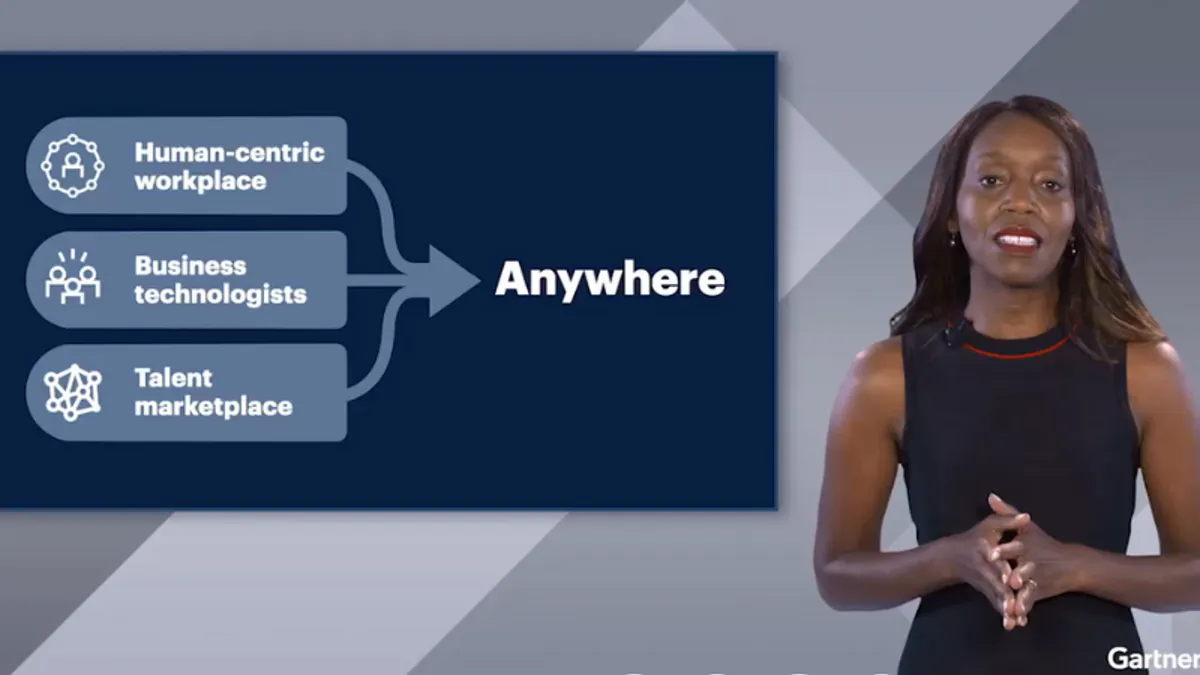Companies are asking their IT leaders to help accelerate growth and try to make up for lost time, an attempt to win back the potential growth lost to the pandemic. But simply rehashing the pre-pandemic playbook won't help them get there.
From hybrid work to vendor dynamics, the changes introduced in the pandemic mean placing strategies under new context, Gartner analysts said in an opening keynote during the virtual Gartner IT Symposium/Xpo 2021 Monday.
The time is now to take risks to capitalize on consumer and regulation shifts, said Hung LeHong, distinguished VP analyst and Gartner fellow.
"At no other time in history have we had this much opportunity to pursue technology-enabled change," said LeHong, speaking Monday on a virtual panel. "Just look at what we've been handed on a plate: 83% of enterprises say that demand for digital products and services is increasing."
With driven interest in digital services comes greater pressure on CIOs, who must assess the resources available to them and take on bolder strategies.
Here are three big changes coming to the enterprise, including shifts to the technology playbook, rethinking hybrid models and an end to business-as-usual, according to Gartner analysts:
1. Hybrid is here to stay - but iteration isn't over:
Even those companies who were born remote-first must reassess their operating model in light of how worker perception to remote work has changed. It's up to organizations to find the model that best suits them.
Dropbox, for example, chose to move to a virtual-first model, where workers had a choice among multiple worksite options, including collaboration spaces called Dropbox Studios.
While some workers still want to operate from a physical office, and others have no desire to return, "our data shows that the overwhelming majority of your employees want and expect the best of both worlds, an expectation that is forcing CIOs to challenge previous assumptions and implement radical flexibility at scale," said Mbula Schoen, senior director analyst at Gartner.
With increased digital tool reliance amid hybrid work shifts, the transition to a new model has added pressure for IT workers, half of whom cite it as their biggest workplace challenge.
"Simply moving from onsite to remote is not the end of the conversation," said Schoen. "It is a starting place for how we can lead forward, a starting place for you as CIOs to implement the new ways of working with the supporting technology across the enterprise."
2. Old ways need a shake-up
There are few businesses whose dynamics weren't altered in some form by the pandemic. And now that the initial, responsive changes have taken place, businesses stand to gain from reimagining the dynamics they hang onto.
Levi's, a 168-year-old company, embraced trend-setting business practices to weather the pandemic, including a direct-to-consumer model, a remote stylist and AI-based changes to its global shipping logistics model, said Daryl Plummer, distinguished VP analyst and Gartner fellow.
With higher IT budgets, "CIOs are gaining the nerve and the resources needed to make bold moves in the years ahead," said Plummer.
Following historic patterns, as well as the data these patterns have generated for companies, is another symbol of pre-pandemic strategy on its way out. With synthetic data, companies can fuel AI systems without the need to invade consumer privacy, Plummer said.
3. Regulation and digital shifts bring opportunity for IT
Regulatory challenges or lack of consumer interest used to hinder innovation. A post-2020 business landscape opens up new avenues for businesses to explore, potentially leading toward revenue recuperation through new services.
"More than ever, changing regulations are a giant invitation card for technology based transformation," said LeHong. "But the one thing that is stopping us is tactical thinking."
For example, healthcare gained ground in the telemedicine space, with regulations eased as the sector responded to the health crisis. Adoption of a number of other technology practices, such as e-signatures, similarly expanded in the pandemic.
With increased reliance on digital services comes the need for an IT organization that can respond, and that means reimagining the role of business technologists.
"Shadow IT is a dead concept," said Schoen. "Instead, business technologists lead from the light, they produce results and their numbers are growing."












